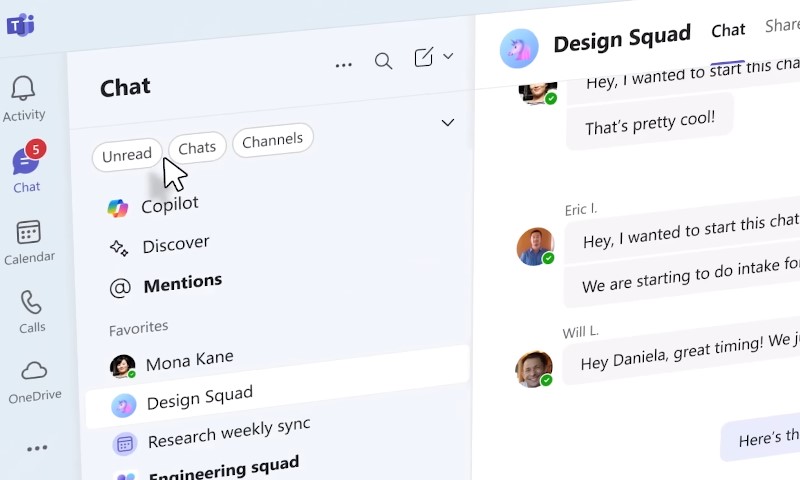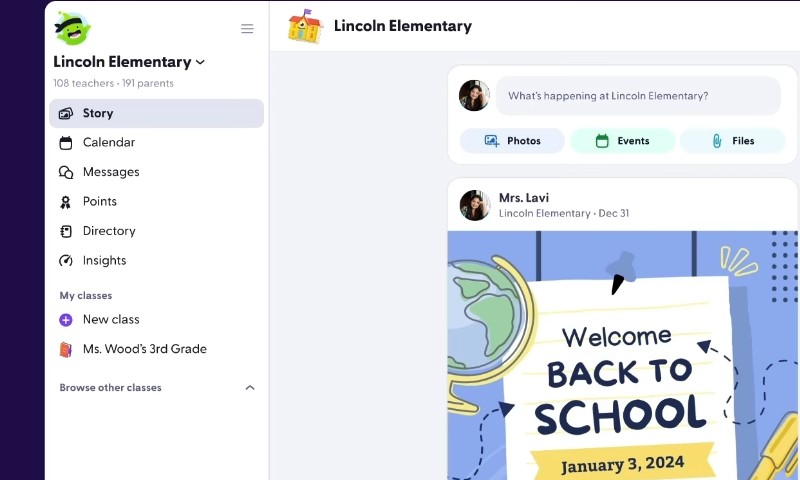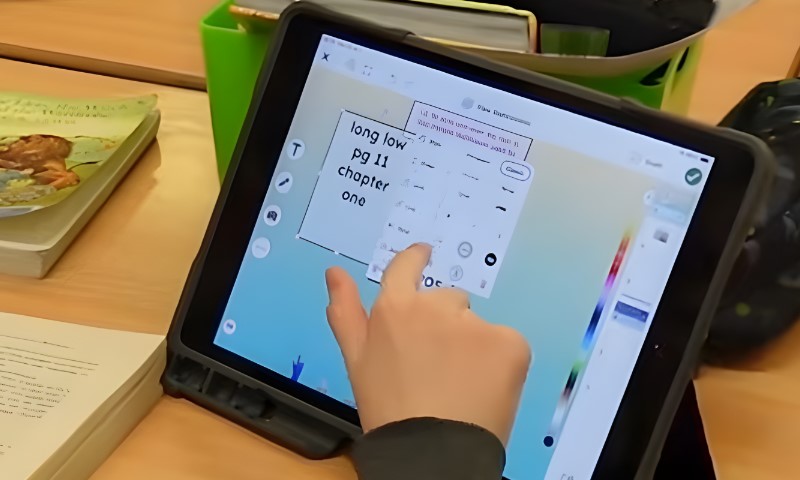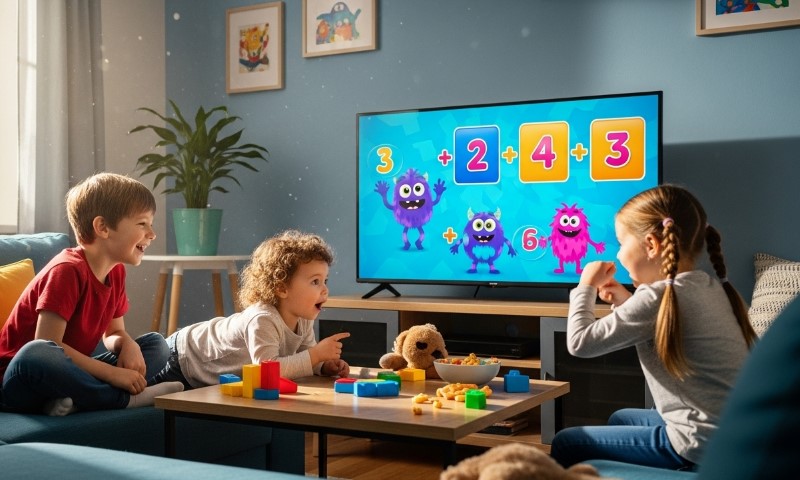
Share Post:
Homework has changed more in the past five years than it did in the previous fifty. In 2025, classrooms are no longer confined to four walls or even a school building. Students learn, submit, and receive feedback entirely online—often across multiple devices and time zones. Teachers now rely on digital platforms that combine automation, analytics, and creativity to manage workloads and help every student learn at their own pace.
The best digital homework platforms in 2025 don’t just deliver assignments; they connect the dots between teaching, engagement, and data-driven learning. They offer real-time grading, track participation, and even suggest personalized resources for struggling students.
Table of Contents
Toggle1. Google Classroom – Simplicity and Scale Combined
Google Classroom remains the benchmark for digital learning because of its accessibility, simplicity, and seamless integration with other Google Workspace tools. What started as a basic way to share assignments has evolved into a full digital ecosystem for education.
In 2025, Google introduced AI-powered feedback assistants that analyze student submissions and suggest individualized comments for teachers. This allows educators to focus on the heart of the assignment—critical thinking and creativity—instead of repetitive grading.
Students, meanwhile, benefit from one-click access to Docs, Slides, Sheets, and Drive. Assignments are automatically sorted by subject and due date, cutting down on confusion and misplaced work.
| Feature | Description |
| Integration | Google Workspace, Meet, Jamboard |
| Unique 2025 Upgrade | AI feedback and smart rubric generator |
| Best For | Schools seeking a low-cost, flexible LMS |
| Price | Free (Education accounts) / Paid Workspace tiers |
Why it works: It’s universal, reliable, and adaptable for every level of education—from primary schools to global universities.
2. Microsoft Teams for Education – Collaboration That Feels Effortless

While Google leads in simplicity, Microsoft Teams dominates in collaboration. By 2025, it’s evolved into a robust educational hub that combines communication, document sharing, and grading.
Teachers can now create virtual classrooms complete with OneNote notebooks, reading trackers, and live assessments. The Engagement Insights Dashboard gives real-time data on which students are most active and which might be silently falling behind.
A standout feature is Reading Progress, a tool that records students reading aloud and uses speech-recognition AI to evaluate fluency—ideal for language learning or early literacy programs.
| Feature | Description |
| Integration | Word, Excel, PowerPoint, Forms, OneNote |
| Unique 2025 Upgrade | Enhanced Engagement Insights & Reading AI |
| Best For | Schools using Microsoft 365 or hybrid systems |
| Price | Free for Education / Premium with 365 licenses |
Why it works: It keeps communication, grading, and feedback in one place—perfect for large schools and districts.
3. Canvas LMS – The Professional Educator’s Platform

Canvas continues to dominate higher education because of its depth, customization, and analytics. Its 2025 update introduces an AI Learning Companion that tracks performance trends, identifies weak areas, and recommends tailored study content for each student.
Canvas’s support for multimedia submissions means teachers can assess not just written reports but also videos, code, and design projects. The inline annotation tools make digital grading almost as personal as in-class discussions.
| Feature | Description |
| Integration | Turnitin, Zoom, Google Drive, OneDrive |
| Unique 2025 Upgrade | Predictive AI Learning Companion |
| Best For | Colleges, universities, and advanced online programs |
| Price | Institutional subscription |
Why it works: Canvas scales perfectly for both small classrooms and entire universities, offering a data-rich, human-centered experience.
4. Schoology (by PowerSchool) – Where Curriculum Meets Data
Schoology merges classroom interaction with district-level analytics, making it one of the strongest K–12 platforms in North America. The 2025 version offers a district-wide data dashboard, giving educators and administrators unified visibility into attendance, performance, and homework completion trends.
For teachers, its flexible grading models—rubric, percentage, or standards-based—support different teaching philosophies. Parents can also log in to monitor progress and communicate directly with educators, ensuring a transparent feedback loop.
| Feature | Description |
| Integration | PowerSchool SIS, Google Workspace |
| Unique 2025 Upgrade | District-wide analytics & parental access |
| Best For | K–12 schools focused on consistency and equity |
| Price | Subscription (PowerSchool ecosystem) |
Why it works: It transforms assignments into insight. Every homework submission becomes part of a larger picture of school performance.
5. Edmodo Neo – Social Learning Reinvented
Once dubbed the “Facebook for classrooms,” Edmodo Neo has matured into an intelligent social learning network that balances fun with academic focus.
Students collaborate through posts, discussion boards, and shared documents, while teachers distribute assignments and moderate feedback effortlessly. Its 2025 update introduced AI Emotion Tracking, helping teachers detect patterns of disengagement or anxiety through student interaction patterns—particularly useful in hybrid or remote environments.
Edmodo Neo also integrates tools like plagiarism detectors and built-in writing support, including connections to AI-based writing aids such as a paraphrasing tool. This feature helps students improve clarity and grammar while learning to express ideas in their own words rather than relying on copy-paste shortcuts.
| Feature | Description |
| Integration | YouTube, Zoom, Google Drive |
| Unique 2025 Upgrade | AI Emotion & Engagement Tracking |
| Best For | Middle and high school classrooms |
| Price | Freemium / Paid Pro plans |
Why it works: It captures the social side of learning while keeping academic standards high. Students engage more naturally because the interface feels familiar—yet purposeful.
6. ClassDojo – Nurturing Young Learners Through Play and Feedback

ClassDojo remains one of the most engaging platforms for early education. Teachers can gamify homework through point systems, rewards, and cheerful visuals that celebrate effort and improvement.
The 2025 “Home Missions” feature brings parents into the learning process. Children complete small tasks—drawing, reading aloud, or solving puzzles—with parents logging progress through the app. The platform’s AI Parent Feedback Assistant helps translate teacher messages into simple language for non-technical users.
| Feature | Description |
| Integration | iOS, Android, Chrome |
| Unique 2025 Upgrade | Home Missions and Parent AI Assistant |
| Best For | Elementary schools |
| Price | Free core / Premium for schools and families |
Why it works: It creates joy in learning and makes homework collaborative between teachers, parents, and children.
7. Kahoot! EDU – Turning Homework Into Games

Kahoot! remains the most dynamic option for teachers who believe learning should feel like play. In 2025, the platform’s Homework Challenge Mode lets teachers assign self-paced quizzes that students can complete asynchronously.
Its new AI quiz generator creates sets of questions tailored to each class’s weak areas. Teachers get visual analytics showing who completed assignments and where the group struggled most.
| Feature | Description |
| Integration | Google Classroom, Microsoft Teams |
| Unique 2025 Upgrade | AI Quiz Generator & Adaptive Homework |
| Best For | Engaging reviews, competitions, and quick assessments |
| Price | Free / Premium EDU subscription |
Why it works: It turns study time into active learning. Students aren’t just completing homework—they’re competing to understand it better.
8. Seesaw – Learning Through Creativity

Seesaw empowers creative learning by allowing students to record videos, draw, and narrate answers instead of just typing. It’s a favorite among primary and middle school teachers who emphasize visual and verbal expression.
The latest 2025 update added real-time transcription and translation, so parents who speak different languages can now follow feedback in their native tongue. Seesaw’s visual timeline also gives teachers a clear picture of progress over the entire school year.
| Feature | Description |
| Integration | Canva for Education, Google Drive |
| Unique 2025 Upgrade | AI translation & audio-to-text features |
| Best For | K–8 creative projects |
| Price | Free / Paid school licenses |
Why it works: It encourages self-expression, letting kids showcase intelligence in ways traditional homework can’t capture.
9. Moodle – The Customizable Classic
Open-source and endlessly adaptable, Moodle remains a trusted choice for institutions worldwide. The 2025 version integrates a Smart Grading Suite capable of evaluating essays, coding assignments, and even discussion participation through AI pattern recognition.
Educators appreciate its independence—schools can self-host Moodle for complete data control. It’s a favorite among universities and professional training centers that need flexibility over aesthetics.
| Feature | Description |
| Integration | Zoom, Turnitin, SCORM, H5P |
| Unique 2025 Upgrade | AI grading, plagiarism prevention, analytics |
| Best For | Higher education and open learning |
| Price | Free (self-hosted) / Paid MoodleCloud options |
Why it works: It’s powerful, customizable, and ideal for institutions that value autonomy over convenience.
10. Quizizz – Smart Homework That Adapts to You
Quizizz has evolved from a quiz game to a full adaptive learning engine. It analyzes student performance in real time and automatically adjusts future question sets.
Its AI Explanation Engine provides instant hints and explanations for incorrect answers, turning mistakes into micro-lessons. Teachers can track each student’s improvement over time, while the platform’s leaderboards keep engagement high.
| Feature | Description |
| Integration | Google Classroom, Canvas, Teams |
| Unique 2025 Upgrade | Adaptive learning and AI explanations |
| Best For | K–12 revision and skill-building |
| Price | Free / Paid EDU versions |
Why it works: It individualizes learning, ensuring every student is challenged at their own level.
The Bigger Picture: What Makes a Great Homework Platform in 2025?
In 2025, great digital homework platforms share three universal qualities: adaptability, feedback, and connection.
- Adaptability means the system understands each learner’s pace and style, adjusting difficulty and resources accordingly.
- Feedback ensures that learning is continuous—whether through AI explanations, automated comments, or teacher insights.
- Connection bridges the gap between students, educators, and parents, turning homework into a shared dialogue rather than a solitary task.
Technology in education has finally reached a stage where it amplifies humanity instead of replacing it. It personalizes teaching while preserving empathy and context—the two things that truly make learning last.
Final Thoughts
As classrooms continue to evolve, homework has become less about repetition and more about reinforcement. Platforms like Google Classroom, Canvas, and Seesaw show that learning is now fluid—it moves between screens, homes, and classrooms while remaining deeply human.
Related Posts:
- 8 Best Resources for Math Teachers 2025 - Websites,…
- Should Schools Stop Giving Homework? A New Debate…
- Algebra 1 Curriculum Breakdown – What Students Will…
- How to Choose the Best Degree for Future Job…
- The Best Math Challenges for Kids in 2025 & How to Get Ready
- Best 10 US. Universities for Mathematics in 2025 –…











